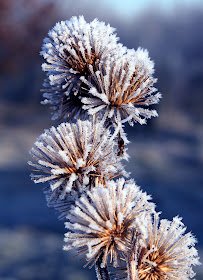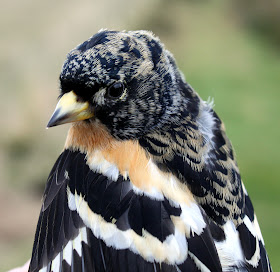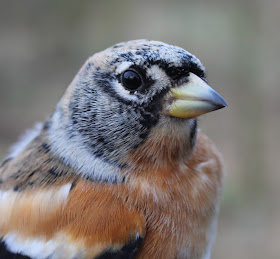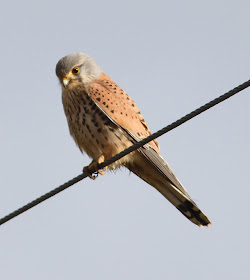There was a little frost at home in semi-rural Stalmine and with the promise of sunshine there was nothing to deter an early start for a spot of ringing. Out on the wide open and exposed Rawcliffe Moss seven miles inland the frost was more obvious.
I waited in the car with a cup of coffee and the engine running until the sun came up and the Roe Deer had run in the opposite direction. A rampant Roe Deer can destroy a £100 mist net in the split second it takes the animal to crash straight through it.
"Frosty"
Roe Deer
The rising sun brought warmth and bird movement as they began to arrive for a breakfast of mixed seed - wheat, sunflower, niger, kibbled maize and red dari. Whatever is in the bag certainly works well enough with another 22 birds caught, all of the target species: New birds - 8 Brambling, 4 Goldfinch, 4 Reed Bunting and 3 Chaffinch. Two others were a Brambling recapture from recent weeks and a Chaffinch from 2012.
Field Sheet
Reed Bunting
The eagle eyed may have noticed on the photograph of the field sheet a Goldfinch “control” - “control” being ringers’ jargon for a bird bearing a ring from elsewhere, in this case D137544, a second calendar year female. I knew it wouldn’t be mine. The ring was on the left leg and I ring on the other.
Goldfinch D137544
This is the adult male Brambling which carried a little fat, weighing in at 26.6 grams.
Brambling - adult male
Brambling - adult male
Most of today’s Bramblings were second calendar year females.
Brambling - second calendar year female
The morning’s birding was rather subdued with 50/60 Fieldfare and 200 Starlings still in the stubble field, 25 Goldfinch, 18 Reed Bunting, 10+ Brambling, 10 Chaffinch and 2 Yellowhammer. Overhead came 3+ Siskin, 15 Curlew flying west, 1 Buzzard and 2 Kestrel.
Further down the farm track the Little Owl sat warming up in the bright sunshine but I couldn’t linger. Lunch beckoned.
Little Owl - Athene noctua
Please put Another Bird Blog on your target list then call by soon and see what’s occurring.


 F
F




















































